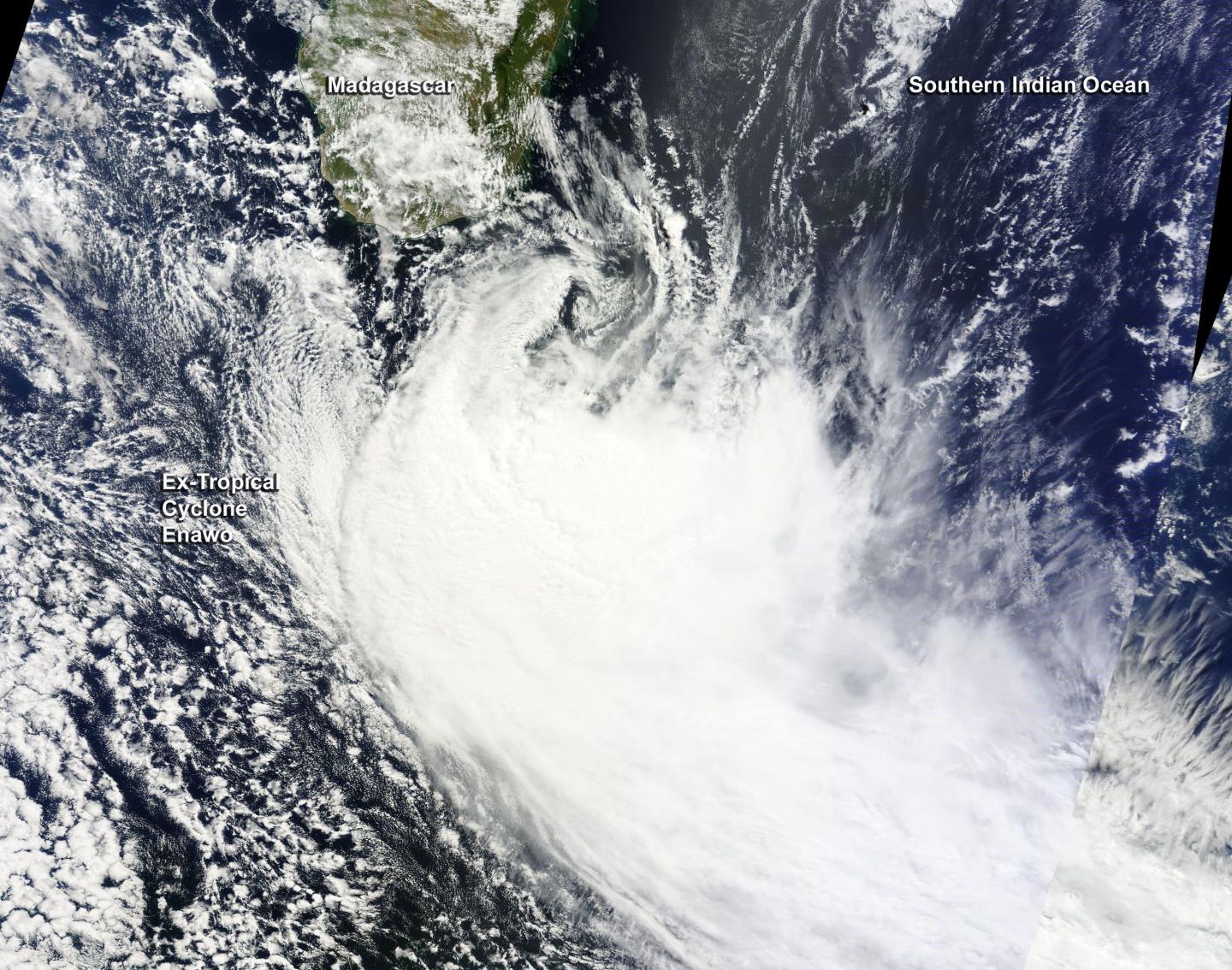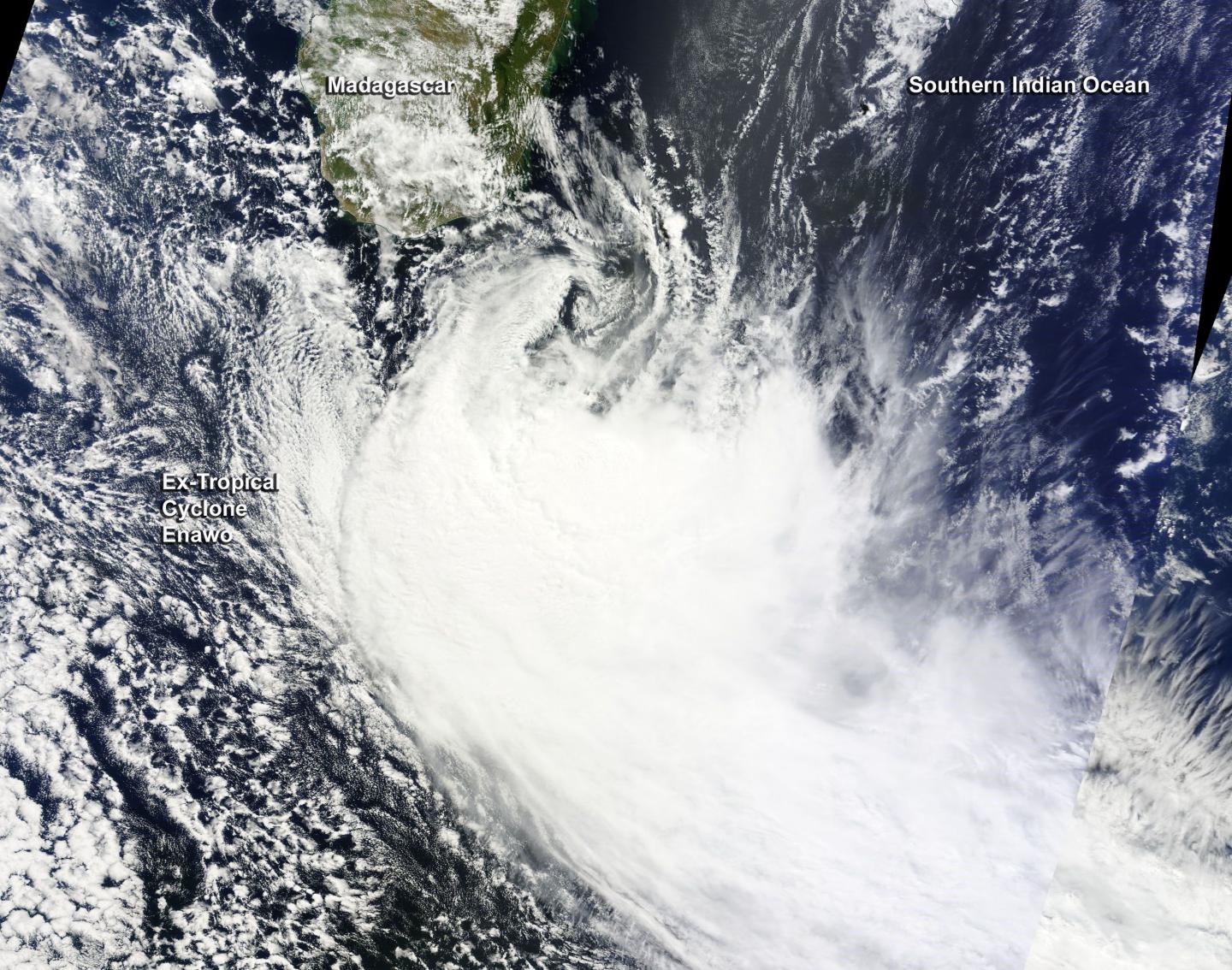
Credit: Credits: NASA
Ex-tropical Cyclone Enawo moved off the southern coast of Madagascar and strengthened back into a tropical storm for a brief period before weakening to a depression. NASA's Terra satellite captured a look at the storm as wind shear continued to batter the storm weakening it further.
Enawo regenerated off the southeastern coast of Madagascar on March 10 at 0000 UTC (Mar. 9 at 7 p.m. EST) when it was about 434 nautical miles (499 miles/ 804 km) southeast of Europa Island. Enawo's maximum sustained winds spun up to 45 knots (51.7 mph/83.3 kph) as the reborn storm moved to the south-southeast at 22 knots (25.3 mph/40.7 kph).
When NASA's Terra satellite flew over Tropical Depression Enawo on March 10 at 0515 UTC (12:15 a.m. EST) the Moderate Resolution Imaging Spectroradiometer or MODIS instrument took a visible light picture of the storm. The image revealed that moderate to strong vertical wind shear had stretched out the clouds associated with the low pressure area. The bulk of the depression's clouds were pushed south of the center.
By 1500 UTC (10 a.m. EST), vertical wind shear battering the storm had weakened its maximum sustained winds to 30 knots (34.5 mph/55.5 kph). It was located about 557 nautical miles (641 miles/1,032 km) southwest of St. Denis, La Reunion Island and was moving to the southeast at 13 knots (14.9 mph/24.0 kph). At that time, the Joint Typhoon Warning Center (JTWC) in Pearl Harbor, Hawaii said "Animated multispectral satellite imagery showed the low level circulation has unraveled and the associated convection has collapsed and dispersed due to high vertical wind shear."
That statement marked the JTWC's final warning on Enawo as the system was being sheared apart in the Southern Indian Ocean.
Rob Gutro NASA's Goddard Space Flight Center
###
Media Contact
Rob Gutro
[email protected]
@NASAGoddard
http://www.nasa.gov/goddard
############
Story Source: Materials provided by Scienmag





